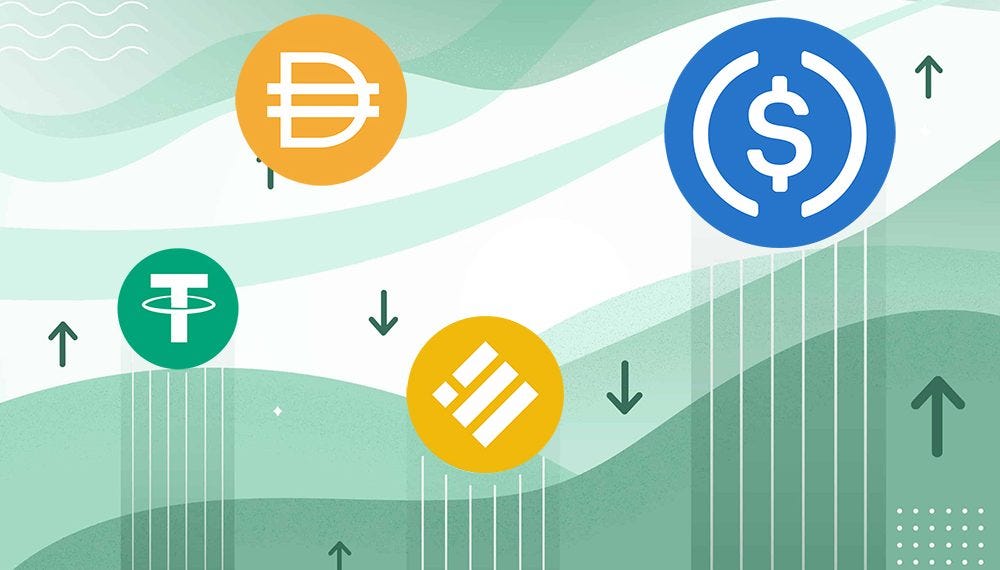The Current State of the Stablecoin Wars
How Regulatory Scrutiny and Undercollateralisation Are Shaking up the Stablecoin Landscape
Regulatory Crackdowns Shake the Market
The Securities Exchange Commission (SEC) has been intensifying its regulatory policy towards the crypto industry, and the stablecoin market has been one of the main targets of the agency. The regulatory scrutiny has led to a shakeup in the market, with Paxos’ decision to stop minting new BUSD tokens causing traders to flock to other stablecoins.
… Undercollateralisation Raises Concerns
Concerns over undercollateralisation have also plagued the stablecoin market. For example, in 2020 and 2021, Binance admitted that the BUSD peg was undercollateralised by more than $1 billion on three occasions, but the issue has since been fixed. Meanwhile, liquidity for BUSD has been steadily decreasing, according to Delphi Digital, which claims that traders are selling their BUSD tokens for other stablecoins on the Ethereum-based Curve protocol’s pool to leverage its fluctuations.
A Rise in Decentralised Stablecoin Assets
Following the news that Paxos has stopped minting BUSD, decentralised stablecoin assets such as FLX and LQTY have seen a surge in demand, according to a report by Delphi Digital. FLX and LQTY are governance tokens issued by Reflexer Finance (RAI) and Liquity Protocol (LUSD). Despite the crypto bear market that characterised the industry in 2022, the report notes that the total stablecoin market cap is only down -18%, while the total crypto market cap is down -55%.
The Case for Each Stablecoin
Each stablecoin has its own merits and flaws. According to Bloomberg, Tether Holdings Ltd’s USDT, the most widely adopted stablecoin launched in 2014, has increased its market shares by over $1 billion in the past 24 hours. Traders are attracted to USDT because it is based outside the U.S. jurisdiction, which makes it less vulnerable to regulatory scrutiny.
USD Coin (USDC), issued by Circle, has recently faced a lot of fear, uncertainty, and doubt (FUD). However, it is important to note that reputable companies, such as BNY Mellon, BlackRock, and Visa, back USDC. In addition, the stablecoin is also 100% backed by cash and treasuries and is audited by Deloitte, with annual audits filed with the SEC.
BUSD, issued by Paxos, has been under regulatory scrutiny, with the SEC alleging that it is an unregistered security. As a result, the stablecoin has seen a decrease in liquidity and a surge in demand for other stablecoins. However, it is important to note that the BUSD peg issue has been resolved, and 68% of BUSD supply is on Ethereum (ETH), while 32% has been bridged to the BNB chain.
What Does the Future Hold for Stablecoins?
Stablecoins will likely face continued regulatory scrutiny as SEC Chairman Gary Gensler implements new requirements for crypto exchanges to gain further regulatory approval. However, stablecoins are becoming an increasingly popular tool for investors to avoid the volatility of the crypto market while still taking advantage of its potential gains. As the crypto market evolves and matures, the stablecoin market will likely continue to grow.
An Opportunity for Decentralised Stables
The stablecoin wars have also led to the rise of decentralised stablecoins, which are not backed by any centralised authority or collateral but use algorithms to maintain their value stability. These decentralised stablecoins have gained significant traction in DeFi, with projects like Frax and Anchor Protocol leading the charge.
Decentralised stablecoins offer several benefits over centralised stablecoins, such as greater transparency, no counterparty risk, and greater resilience to market shocks. However, they are also more complex and require greater technical expertise.
As the stablecoin wars continue, it remains to be seen which stablecoins will emerge victorious. We may see a bifurcation of the stablecoin market, with centralised stablecoins catering to institutional and mainstream investors and decentralised stablecoins serving the DeFi community.
Conclusion
The stablecoin wars reflect the broader regulatory battle being waged by governments worldwide against the crypto industry. As the SEC and other regulators seek to bring the industry under their purview, stablecoins have become a battleground for competing interests.
While centralised stablecoins such as Tether, USDC, and BUSD continue to dominate the market, they are not without their flaws and controversies. The rise of decentralised stablecoins offers an alternative path, but whether they can displace their centralised counterparts remains to be seen.
In the meantime, the stablecoin wars are likely to continue, with new players entering the market and existing players jockeying for position. As with any emerging market, the future is uncertain, but one thing is clear: stablecoins are here to stay.






